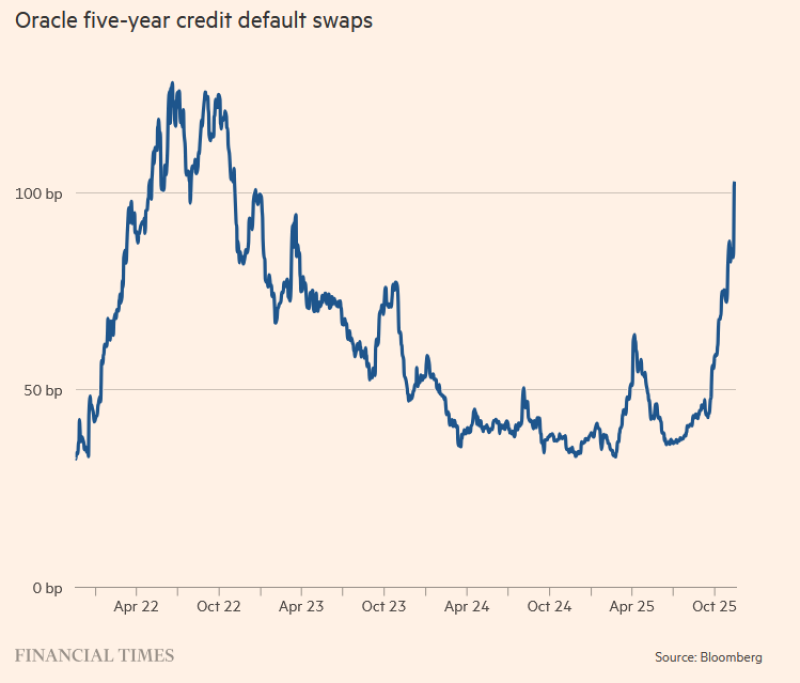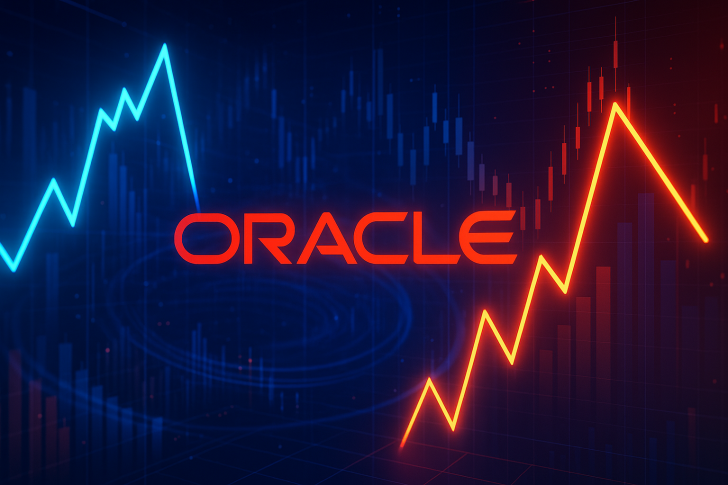⬤ Oracle is facing serious financial pressure with its five-year credit default swaps jumping to levels not seen in three years. The company has lost $315 billion in market value since unveiling a $300 billion deal with OpenAI on September 10. CDS pricing has surged from earlier lows this year to above 100 basis points, showing markets are pricing in significantly more credit risk.

⬤ The concerns center on Oracle's ballooning debt load fueling its AI expansion push. The company's net debt currently stands at 2.5 times EBITDA after more than doubling since 2021, and analysts expect it could nearly double again by 2030. Oracle plans to spend $35 billion on capital expenditures this fiscal year, with projections climbing to around $80 billion annually by 2029. The recent CDS spike confirms that sentiment has shifted dramatically after years of relatively stable pricing.
⬤ Oracle's cash flow is expected to stay negative for five consecutive years, and by 2027 most of its revenue would come from OpenAI. The challenge is that OpenAI hasn't proven it can operate profitably yet, having reported $13.5 billion in losses against just $4.3 billion in revenue. This heavy customer concentration risk is reflected in rising CDS costs. Markets are questioning a debt-heavy strategy that depends almost entirely on one partner who's simultaneously building its own infrastructure and could eventually need Oracle's services less.
⬤ The surge in credit protection costs matters because it signals a broader market rethink of AI-driven capital spending and debt-fueled growth strategies. The move to three-year highs shows credit markets are getting more cautious about massive AI infrastructure bets tied to uncertain long-term demand. This highlights real structural risks for companies betting heavily on single customer relationships during such a rapidly changing phase of the AI industry.
 Marina Lyubimova
Marina Lyubimova

 Marina Lyubimova
Marina Lyubimova


